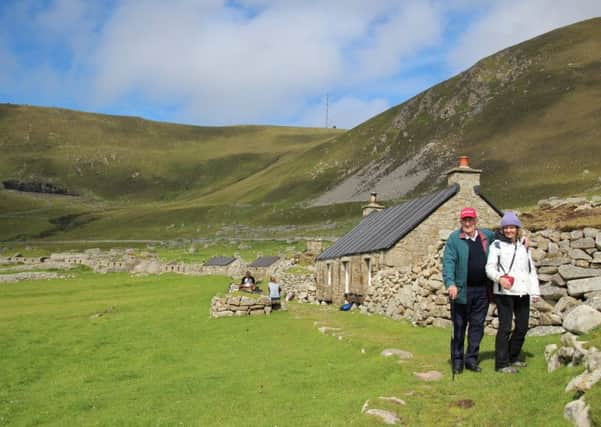A life long lost but the memories of St Kilda live for visitors to islands


From the moment my brother asked me if I’d like to go to St Kilda, it was a no brainer. I was curious about St Kilda, particularly the way in which people survived in such a harsh climate and remote location.
What made this trip special was that I was making it with my Father, himself a Lewis man, from the West side.
Advertisement
Hide AdAdvertisement
Hide AdThe date of the trip coincided with a big family holiday in Lewis – 12 of us in total including Dad’s children and grandchildren. This was Dad’s chance to share his island’s history, landscape and culture with his beloved grandchildren, and it was my chance, also, to be reminded of those amazing childhood holidays. Additionally, it was a chance for many of us to discover more about St Kilda.
Leaving behind white-washed cottages and all signs of civilisation on Harris, we disappeared over the horizon, to begin our adventure to St Kilda. In the bracing wind, I sat on deck and steadied myself with the swell, breathing in the salt air. How different it must have been for St Kildans risking their lives in rowing boats crossing such treacherous waters.
The dramatic, sheer cliffs of Boreray, were my first glimpse of the archipelago of St Kilda. Columns of craggy, volcanic rock rise high above the sea next to steep grass slopes. It looks steadfast and foreboding - impossible to land on - never mind to live on. Around the corner, we approached the next, and biggest island, Hirta, where, nestled in between the slopes, are the remains of the last settlement. Most houses are now mere heaps of stones, apart for those that have been restored. Scattered across the land are hundreds of cleits where the islanders kept their food and fuel.
Today, three organisations – the National Trust for Scotland, Scottish National Heritage and the Ministry of Defence work in partnership to ensure the care and protection of this World Heritage site.
Advertisement
Hide AdAdvertisement
Hide AdThe Museum is one of three houses that have been restored, and it offers a wealth of information on the natural environment, its history and the people. The real-life stories of people who lived there show how hard they worked – all day and every day - and they took on enormous challenges to fight for their survival.
Photographs show men with heavy sacks on their backs, fishing and balancing on the rocks; women carrying dead birds, looking after cattle, knitting and spinning. Children sitting cross- legged in the group shots, with the hint of hidden smiles. There is a real sense of community about the place.
My eyes filled with tears as I read about the evacuation of the island described by an islander as the first and final break of one big family.
“I have a good feeling about this place” said my Dad, as he gazed around, and so he should, as, after all, St. Kildans were always Hebrideans.
Leaving Hirta, we sailed around the amazing sea stacks.
Advertisement
Hide AdAdvertisement
Hide AdFearsome looking structures, reaching high into the sky. A gushing channel threw spray onto the sides of slates of slippery, wet rock. I gazed in wonder. How on earth did men jump from boats onto that and climb high, reaching out to kill birds and collect eggs? The story of a group who were left on one stack for nine months after an outbreak of smallpox on Hirta, and survived, is almost unbelievable.
There are colonies of gannets and fulmars on the rocks, and high above, thousands of puffins circled us – yes, thousands! No camera can do this justice as we all looked up in awe.
Sailing away from the stacks, I saw a solitary sheep clinging on to a steep slope and felt sure that survival is hard for her too.
Leaving the archipelago of St Kilda behind and the grey silhouettes of Boreray and Hirta, I thought about how heart-breaking it must have been to leave a place that had been inhabited since prehistoric times. However, this was a new start for the St Kildans, and one they had chosen.
People die and move on, but memories remain, and St. Kilda’s story still enthrals.